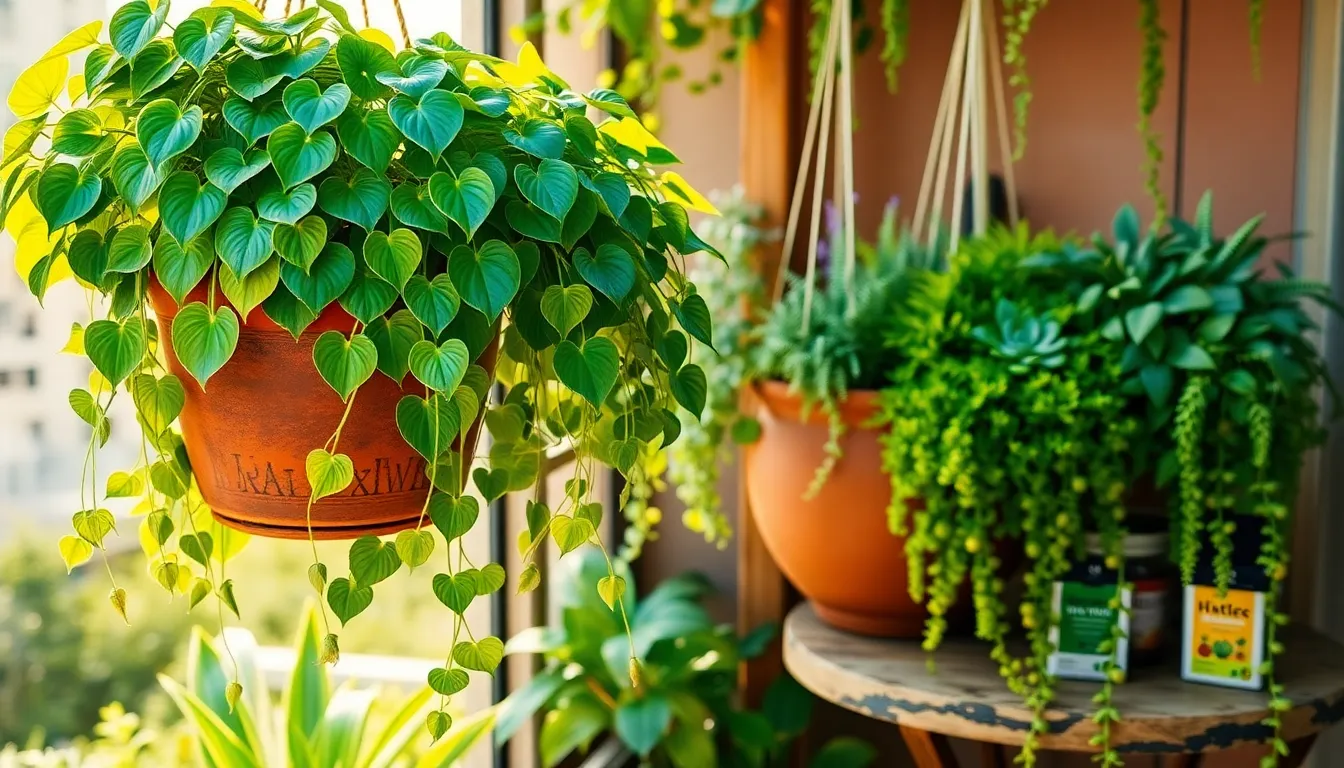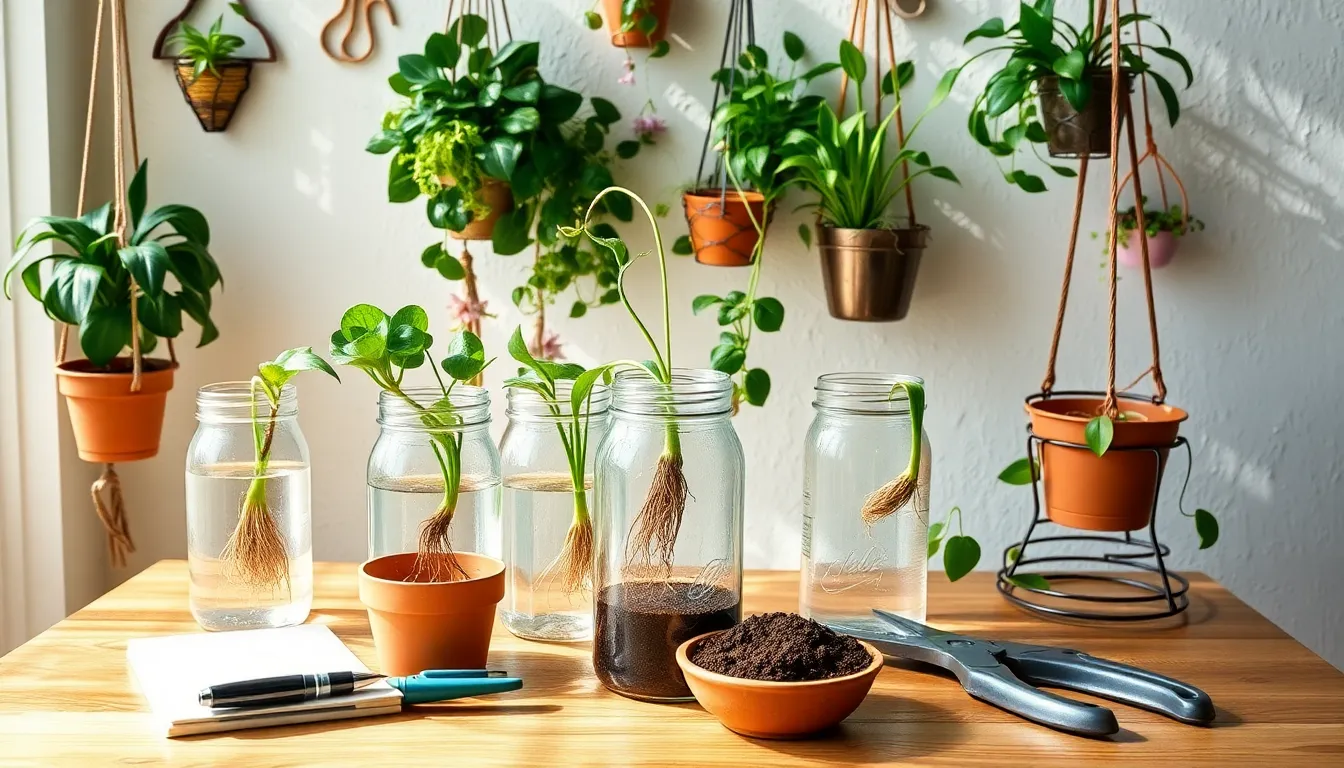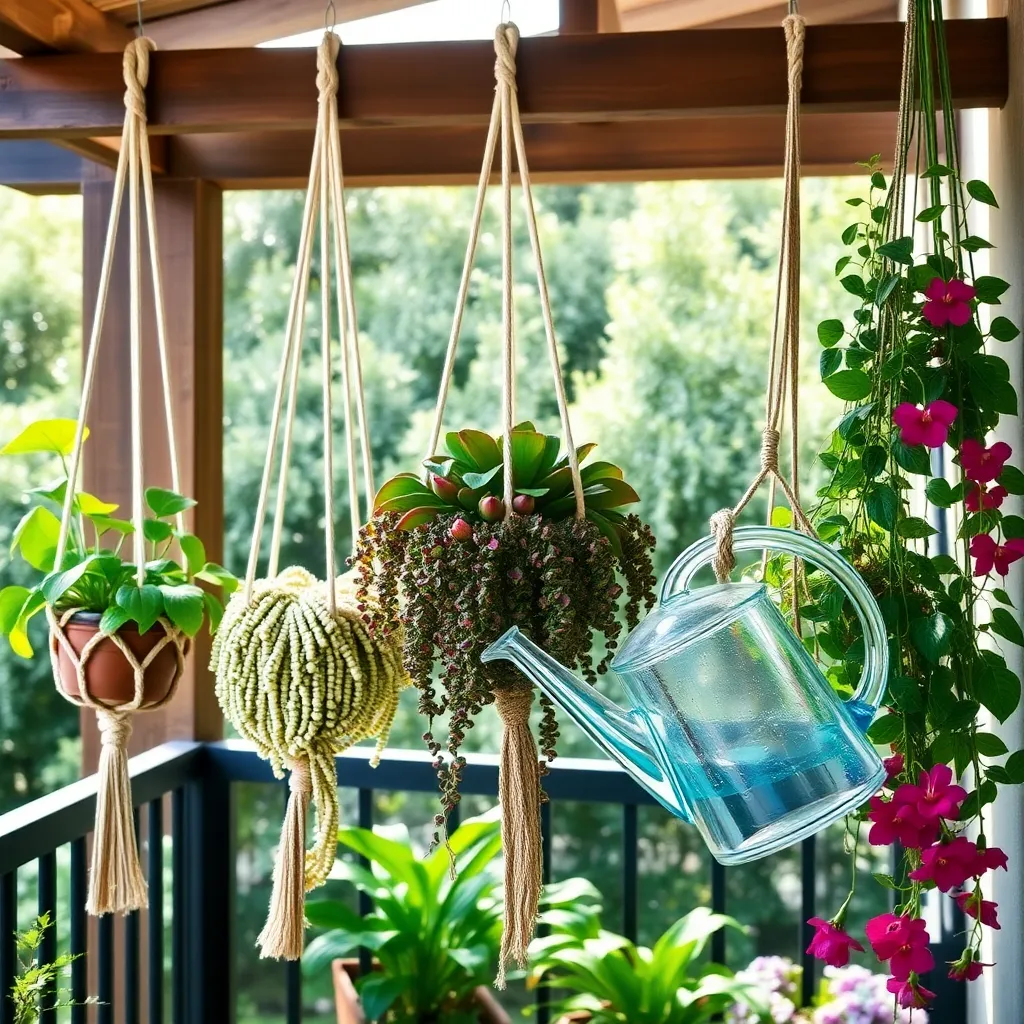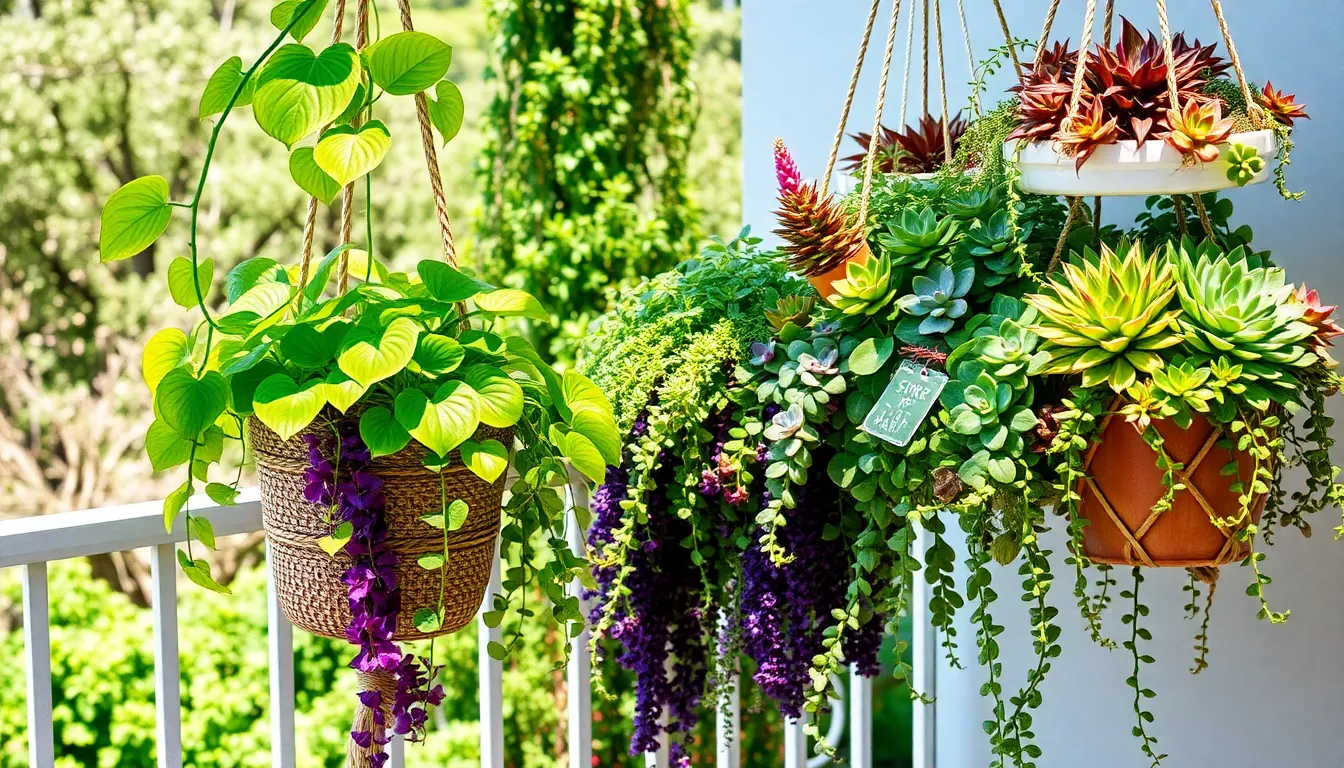Hanging plants bring a touch of lush, vibrant beauty to any indoor space, offering a unique way to enjoy nature’s charm even within the coziness of your home. Whether you’re just starting your gardening journey or have a seasoned green thumb, mastering the art of fertilizing these cascades of greenery can elevate your indoor garden to new heights of health and splendor.
In this guide, we’ve curated a selection of essential fertilizer tips that promise to transform your hanging plants into thriving, eye-catching displays. By understanding the specific needs of these aerial beauties, you’ll unlock the secrets to lush foliage and abundant blooms, ensuring your garden is not only a source of pride but also a constant delight.
Imagine the joy of watching your plants flourish, their leaves glossy and vibrant, thanks to the simple yet powerful techniques you’ll discover here. With our expert advice, you’ll feel confident and equipped to nurture your hanging plants, reaping the rewards of a greener, more inviting home.
Choose Slow-Release Fertilizer Pellets
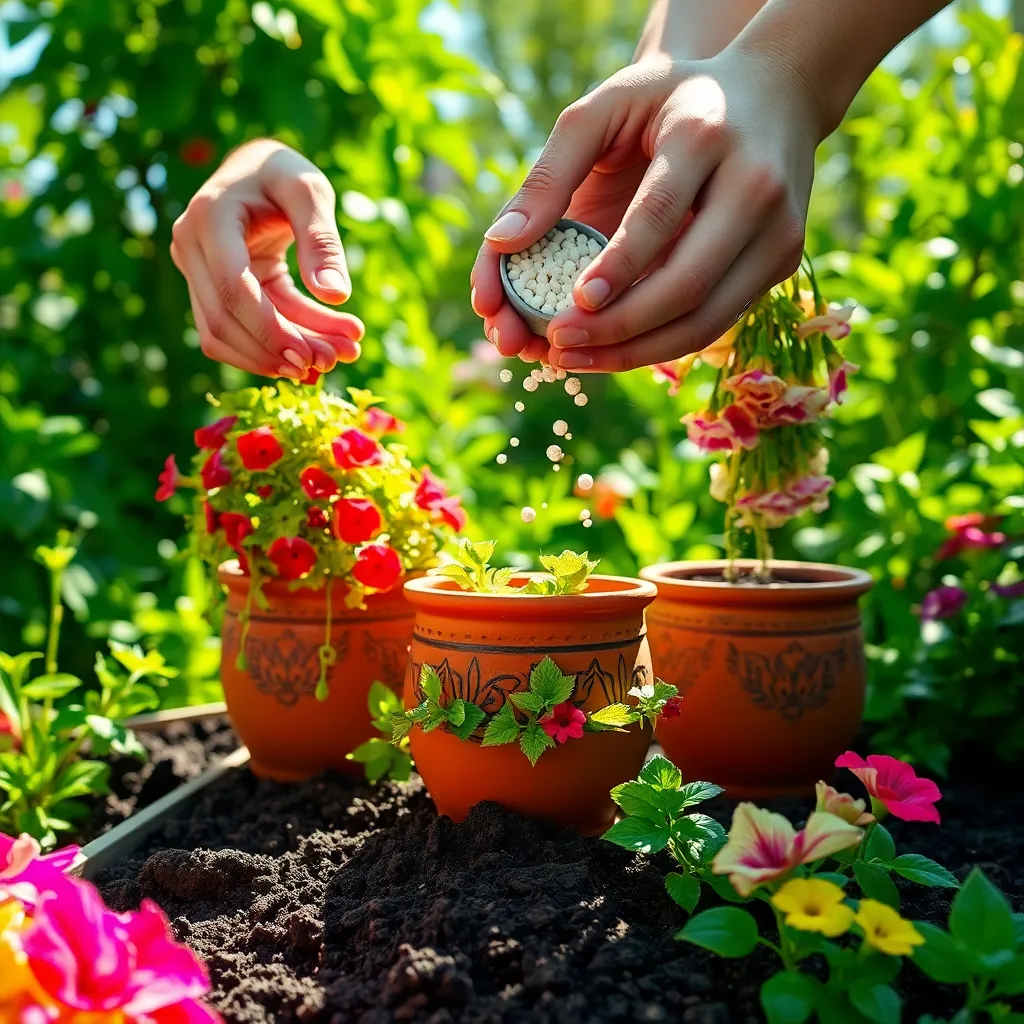
When nurturing hanging plants, slow-release fertilizer pellets offer a convenient and effective way to ensure consistent nutrition. These pellets gradually release nutrients over time, reducing the need for frequent feeding and helping to maintain balanced growth.
For beginner gardeners, choosing a balanced formulation such as a 14-14-14 NPK ratio is a great start. This ensures that your plants receive equal portions of nitrogen, phosphorus, and potassium, which are crucial for healthy foliage, strong roots, and vigorous blooms.
Advanced gardeners might consider using specific formulations tailored to the needs of their particular plants. For instance, flowering plants may benefit from a higher phosphorus ratio to encourage more blooms.
To apply, simply press the pellets about 2 inches into the soil surface; this helps them integrate with the soil efficiently. Water your plants thoroughly after application to activate the nutrients, but be careful not to overwater, as this can lead to nutrient leaching.
For best results, pair the use of slow-release fertilizer with regular monitoring of your plants’ growth and health. Adjusting the amount or type of fertilizer based on seasonal changes or plant development can optimize your efforts.
Apply Liquid Fertilizer Monthly

When it comes to hanging plants, applying a liquid fertilizer monthly can significantly enhance their growth and health. Monthly feeding ensures that your plants receive the necessary nutrients, especially when they’re in active growth phases.
To begin, choose a balanced liquid fertilizer with an N-P-K ratio of 20-20-20 or similar. Dilute this fertilizer to half the recommended strength to prevent overfeeding, which can damage your plants.
Apply the fertilizer during your regular watering routine to make the process seamless. Ensure the soil is moist before application, allowing the nutrients to be absorbed more effectively by the roots.
For hanging plants that thrive in full sun, like petunias and geraniums, a monthly liquid feed supports their vibrant blooms. In shadier conditions, such as with ferns and ivy, this practice will maintain lush foliage.
Advanced gardeners might consider using a foliar spray method for additional nutrient uptake. This involves gently misting the leaves with a diluted solution, boosting plant vigor and resilience.
Balance NPK for Optimal Growth
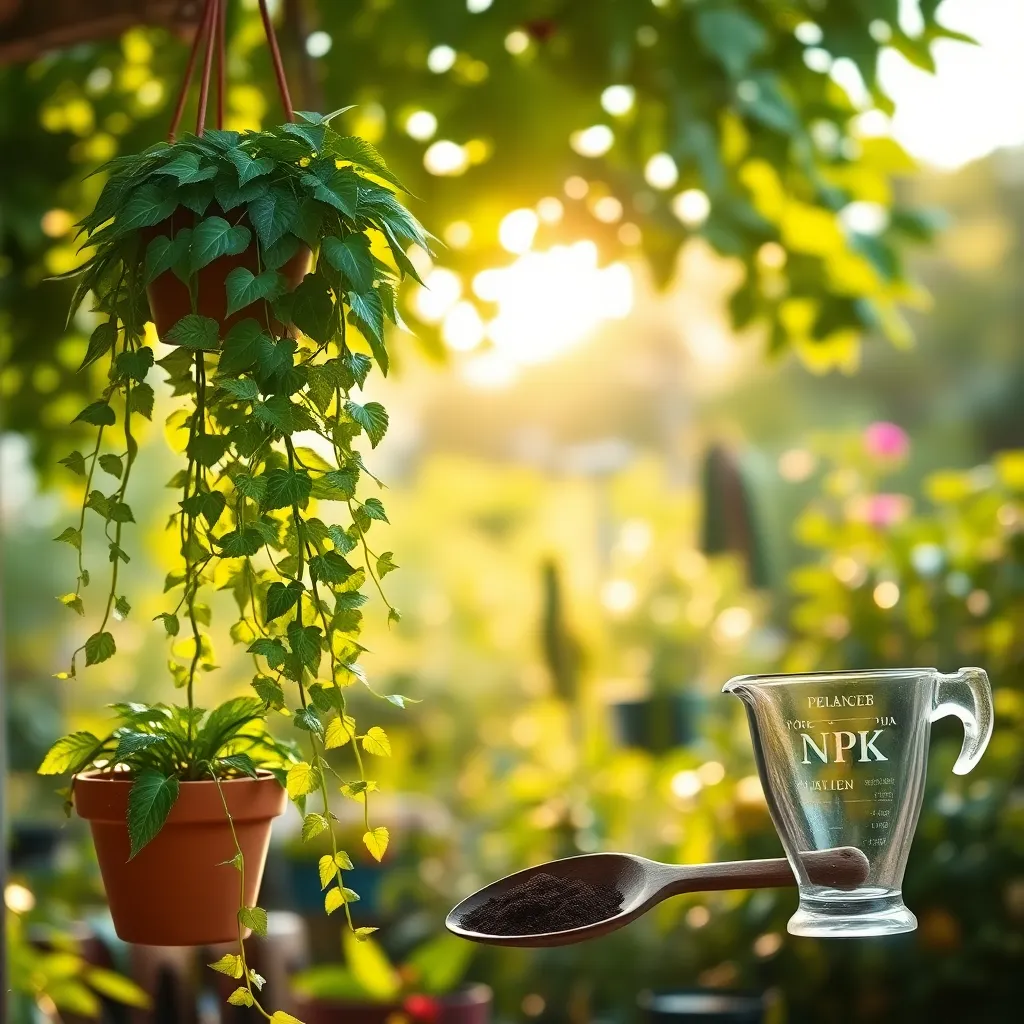
Achieving a balanced NPK ratio in your fertilizer is crucial for the optimal growth of hanging plants. Nitrogen (N), phosphorus (P), and potassium (K) each play distinct roles: nitrogen promotes leaf growth, phosphorus supports root and flower development, and potassium enhances overall plant health.
Begin by assessing the specific needs of your hanging plants, as different species may require varying NPK ratios. For instance, flowering hanging plants like petunias benefit from a balanced 10-10-10 NPK, while foliage plants such as ferns might thrive with a higher nitrogen formula like 20-10-10.
For a more customized approach, consider conducting a soil test to determine existing nutrient levels. This will help you adjust the fertilizer application to address any deficiencies, ensuring your plants receive precisely what they need for robust growth.
When applying fertilizer, dilute it to half strength if you’re using a liquid formula, as hanging plants in containers can be more sensitive to over-fertilization. Apply the diluted solution evenly across the soil surface to avoid root damage and ensure even nutrient distribution.
Use Compost Tea as a Boost
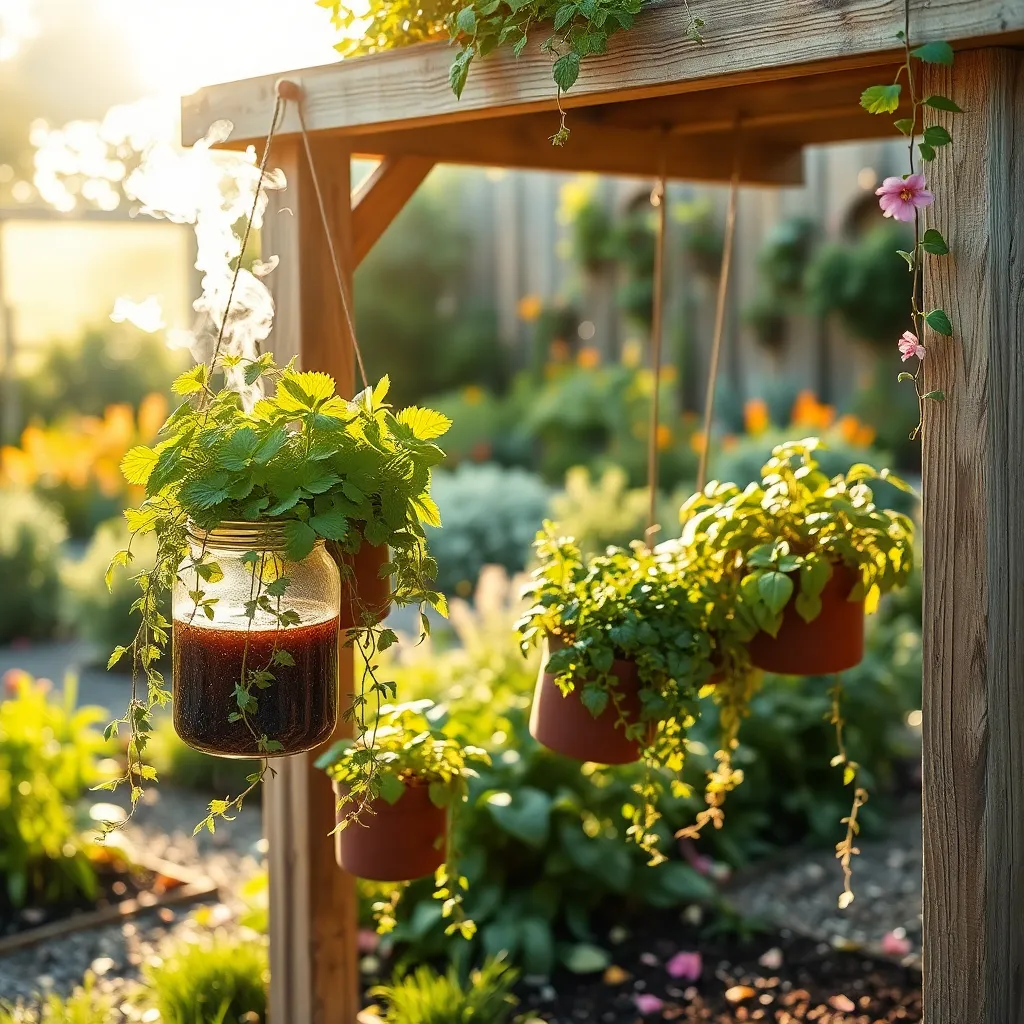
Compost tea is a fantastic way to give your hanging plants a nutrient boost. This liquid fertilizer is rich in beneficial microorganisms that can enhance soil health and improve plant growth.
To make compost tea, start by filling a container with water and adding a mesh bag filled with mature compost. Let it steep for 24 to 48 hours, stirring occasionally to ensure even nutrient distribution.
Apply the compost tea directly to the soil of your hanging plants once every two to four weeks for optimal results. This practice helps plants absorb nutrients more efficiently, promoting lush foliage and vibrant blooms.
If you’re dealing with specific plant issues, compost tea can also act as a natural remedy. The beneficial bacteria and fungi in the tea can help control diseases and improve plant resilience.
Incorporate Epsom Salt for Magnesium
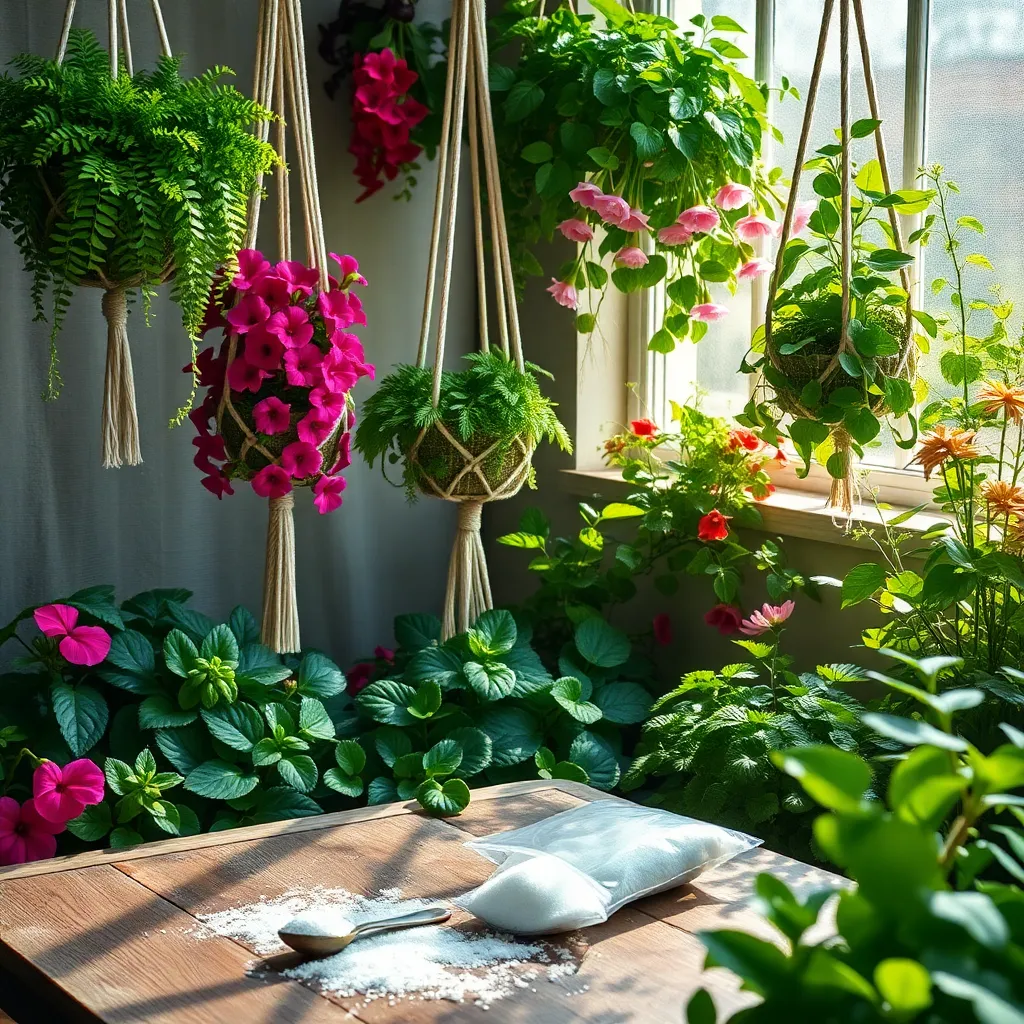
Consider incorporating Epsom salt into your hanging plant care routine to provide a boost of magnesium, an essential nutrient for plant health. Magnesium helps with chlorophyll production, resulting in greener leaves and more vibrant blooms, especially for flowering plants like petunias and fuchsias.
To use Epsom salt, mix one tablespoon into a gallon of water and apply it directly to the soil of your hanging plants once a month. This practice ensures that your plants receive a steady supply of magnesium, which supports root development and overall vitality.
Beginner gardeners will find this method easy to execute, as it requires no special equipment or complex measurements. Simply ensure that the Epsom salt is fully dissolved in the water before application to avoid any residue on the soil surface.
For those with more experience, try experimenting with foliar feeding by spraying the same Epsom salt solution directly onto the leaves. This technique can provide a quick magnesium uptake, particularly useful if you notice yellowing leaves or slow growth.
Conclusion: Growing Success with These Plants
In nurturing your hanging plants, much like fostering healthy relationships, understanding and applying the right elements is key. First, we explored the necessity of consistent communication, akin to regular watering, ensuring your plants—and relationships—don’t wither from neglect. Next, just as the right balance of nutrients ensures robust growth, so does understanding and meeting your partner’s emotional needs. Third, we emphasized adaptability, similar to adjusting fertilizer types for different seasons; relationships too require adjustments to thrive through life’s changes. Fourth, patience is vital, recognizing that growth takes time and nurturing. Finally, we highlighted the importance of ongoing education, whether it’s learning about new plant care techniques or relationship skills.
As a first step, take a moment to assess your current relationship dynamics, identifying areas that could benefit from a little more “fertilizer.” Then, bookmark this article to revisit these principles as you cultivate stronger connections.
Remember, relationship success is a journey, not a destination. With the right care and attention, you can foster an environment where both your plants and your relationships flourish. Save this article as your go-to guide for nurturing relationships that blossom beautifully over time.

